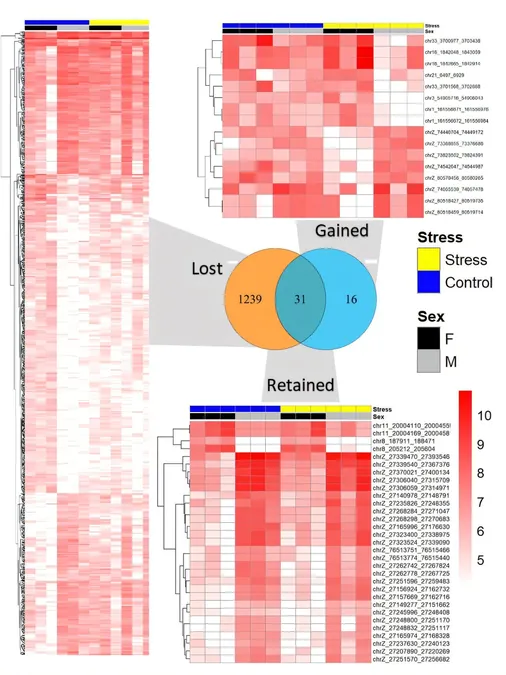
Could Erratic Light Exposure Erase Biological Differences in Birds?
2025-05-08
Author: Siti
Light is more than just a daily cue; it influences our wakefulness, alertness, and sleep cycles. But what if this vital force became erratic? A team of researchers has uncovered alarming insights in their new study published in the *Journal of Pineal Research*, revealing that irregular light exposure can disrupt the biological distinctions between male and female birds—particularly in their brains.
Light functions as a regulator of biological rhythms across many species. For instance, artificial lighting is a common tool in poultry farming to enhance growth and reproduction. However, the alarming question arises: how does unpredictable light affect the brain, especially the pineal gland, which is essential for regulating circadian rhythms through melatonin production?
In an extensive collaboration with researchers from Uppsala University in Sweden and the University of São Paulo in Brazil, the team monitored chickens exposed to erratic light patterns during crucial early developmental stages. They meticulously examined the birds' brains to investigate changes in gene activity, microRNAs, and DNA methylation—key markers that dictate how genes are expressed.
The findings were startling.
Under conditions of chronic light stress, the molecular differences between male and female pineal glands nearly vanished. This striking phenomenon was particularly evident in the epigenome—the mechanism that regulates gene expression without altering the DNA sequence. While the epigenetic differences decreased, gene activity still exhibited marked sex-specific patterns, hinting at the body’s attempts to adapt when regulatory systems falter.
A particularly noteworthy discovery was the impact on female birds. In normal conditions, significant molecular differences existed between the sexes. Yet, under stress conditions, this disparity almost disappeared for females, especially regarding genes located on the Z chromosome, one of the two sex chromosomes in birds.
As Dr. Carlos Guerrero-Bosagna, a co-author of the study, pointed out, "This suggests that female birds are uniquely susceptible to environmental stress at the molecular level. These findings provoke critical questions about animal welfare and extend to how artificial lighting might influence biological rhythms in other species, humans included."
While the study specifically focused on birds, its implications resonate widely. Many individuals today grapple with erratic light exposure—from shift work to relentless artificial lighting and pervasive digital screens. If such inconsistencies can obliterate fundamental biological distinctions in birds, what ramifications might they have for our own molecular health?
These revelations not only cast a spotlight on the fragility of biological systems but also urge us to consider the potential effects of our modern lifestyles on health and development.

 Brasil (PT)
Brasil (PT)
 Canada (EN)
Canada (EN)
 Chile (ES)
Chile (ES)
 Česko (CS)
Česko (CS)
 대한민국 (KO)
대한민국 (KO)
 España (ES)
España (ES)
 France (FR)
France (FR)
 Hong Kong (EN)
Hong Kong (EN)
 Italia (IT)
Italia (IT)
 日本 (JA)
日本 (JA)
 Magyarország (HU)
Magyarország (HU)
 Norge (NO)
Norge (NO)
 Polska (PL)
Polska (PL)
 Schweiz (DE)
Schweiz (DE)
 Singapore (EN)
Singapore (EN)
 Sverige (SV)
Sverige (SV)
 Suomi (FI)
Suomi (FI)
 Türkiye (TR)
Türkiye (TR)
 الإمارات العربية المتحدة (AR)
الإمارات العربية المتحدة (AR)